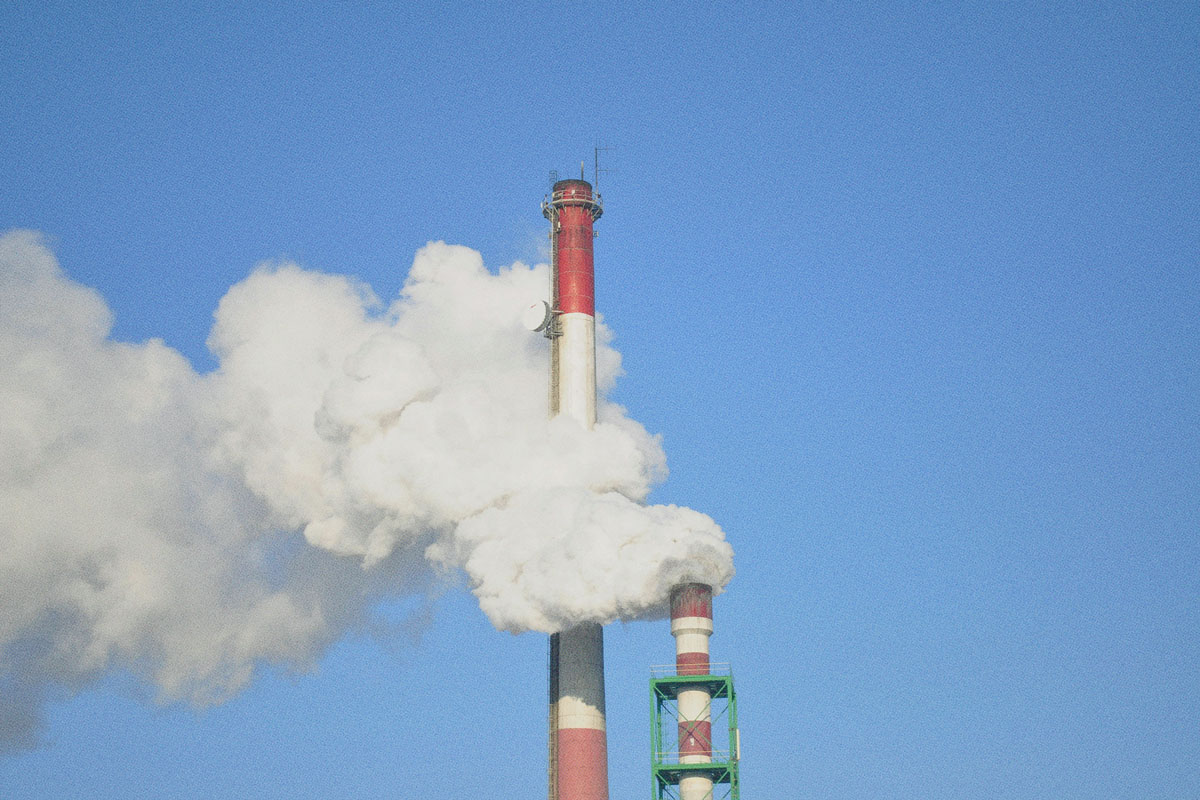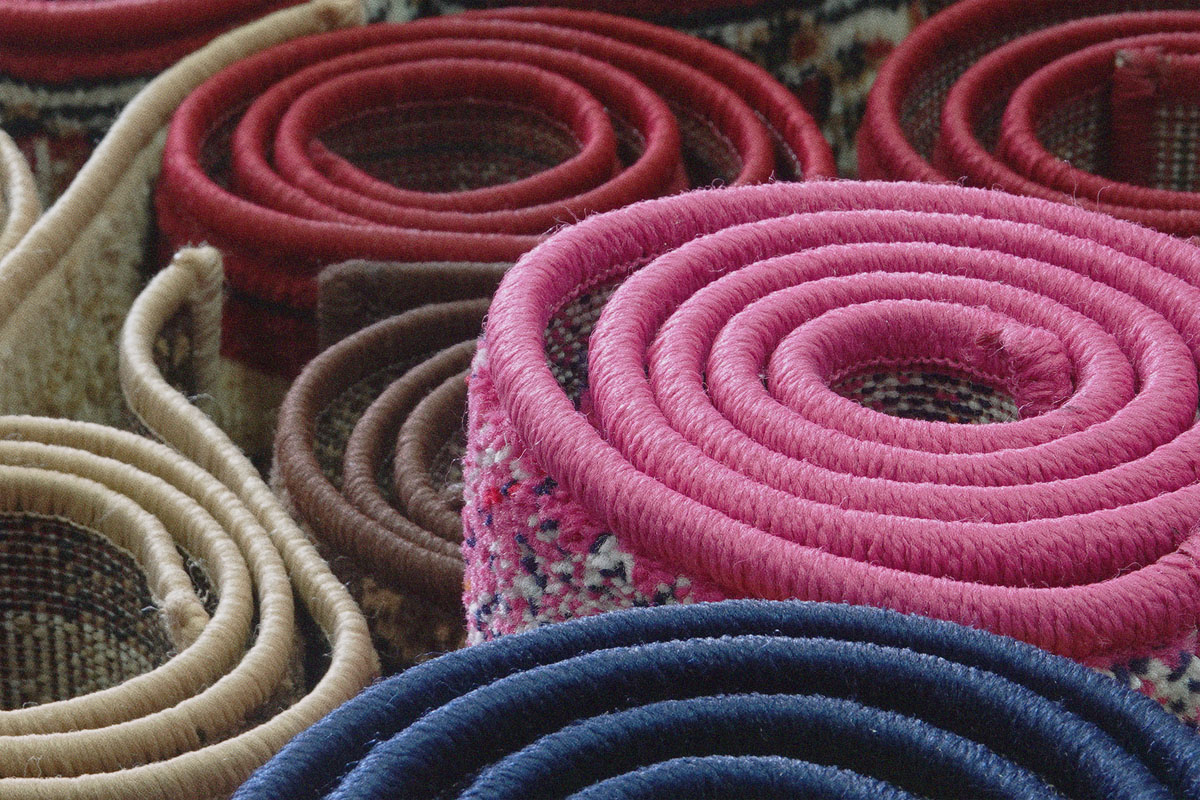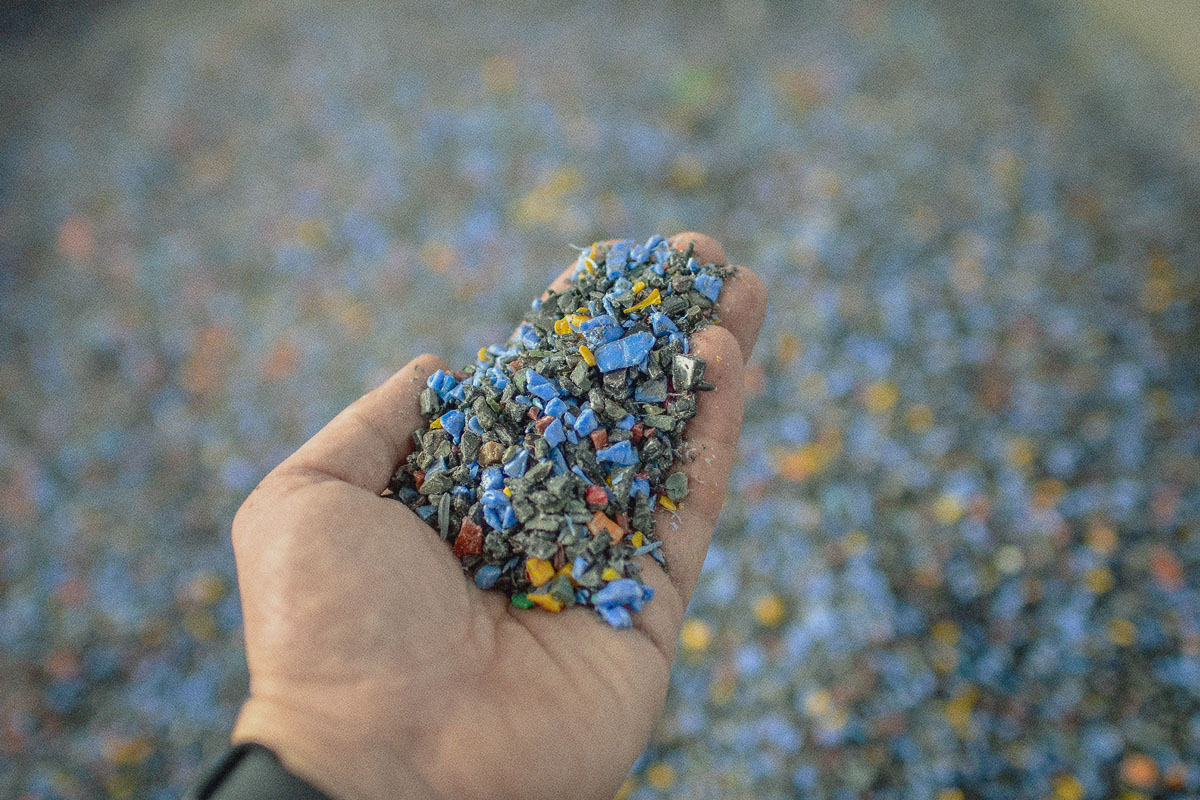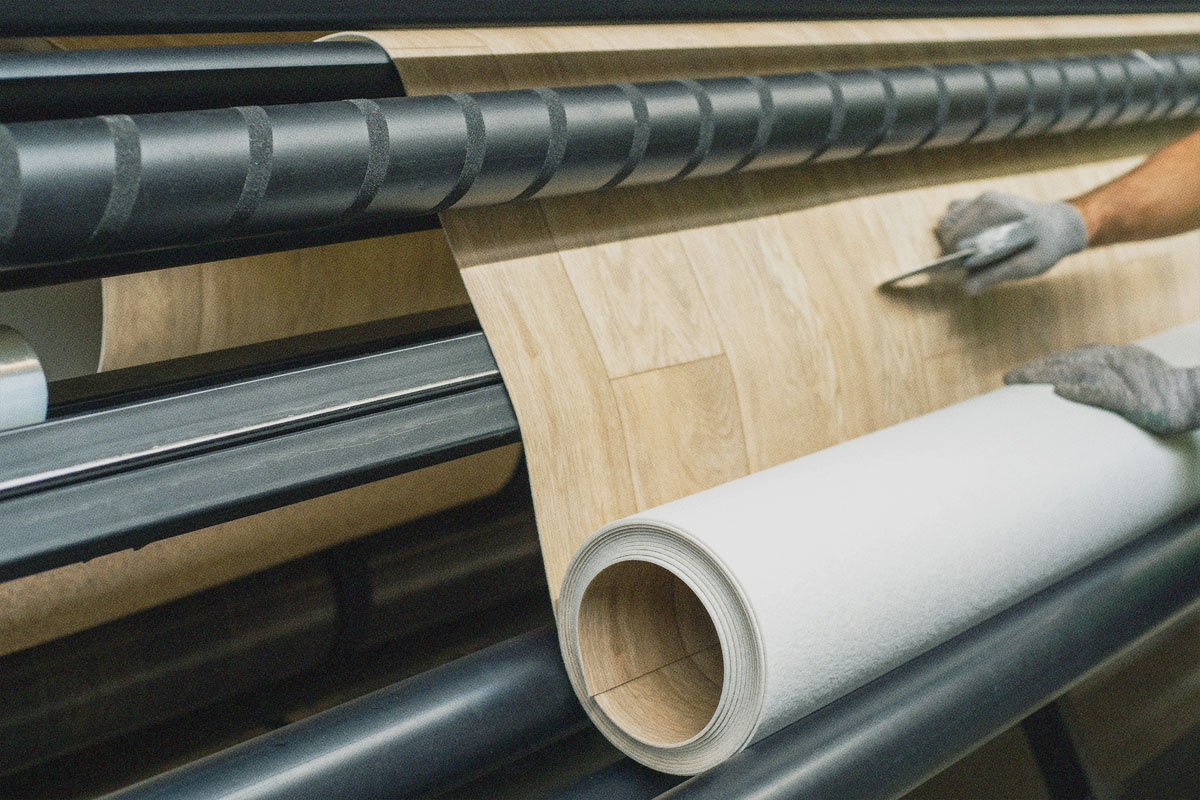 READ HABITABLE’S NEW REPORT
READ HABITABLE’S NEW REPORTSymptoms of “sick building” syndrome include “headache; eye, nose, or throat irritation; dry cough; dry or itchy skin; dizziness and nausea; difficulty in concentrating; fatigue; and sensitivity to odors”.1
These symptoms can develop after long-term exposures, or they can occur after a single instance of exposure, as in the case reported by the Minnesota Daily last month.2 Three carpet installers were sent to the emergency room after installing carpeting in an apartment building intended for student housing near the University of Minnesota. The workers could not tell doctors what they were exposed to because the carpeting did not include a complete list of contents. To find out, the workers first measured the air quality with a device ordered off of Amazon, which immediately “jumped to red” when exposed to the carpeting. The Minneapolis Building and Construction Trade Council then sent carpet samples to a lab for emissions testing. This testing found total volatile organic compounds (TVOCs) at levels that “significantly exceed” typical levels in the air. The chemicals noted on the report included some on the Minnesota Department of Health list of Chemicals of High Concern.3
What we know is that there is no law or regulation that requires building product manufacturers to disclose all product content. One of the workers interviewed for the report said he has persistent symptoms including impaired memory function, ringing in his ears, and fatigue. Because current regulations will not protect consumers, workers, or building occupants from toxic chemicals in building products, it is up to building owners, designers, specifiers, architects, other AEC professionals to know better, so we can do better. This story highlights the need for full disclosure of building materials. Until that becomes the norm, use our InformedTM product guidance to identify building products–like carpet–that are healthier for people and our planet.

After ventilating the student housing building in Minneapolis, the city’s initially “high chemical readings” dropped. According to the Minnesota Daily article, the city’s inspections show the levels are now safe. Meanwhile, one of the workers who was initially sickened by the incident was an independent contractor and therefore ineligible for workers’ compensation for the symptoms he is still experiencing months later. This and future incidents are preventable. Safer selection of materials begins with product transparency.
SOURCES
- EPA, 1991.Air and Radiation (6609J). “Indoor Air Facts No.4: Sick Building Syndrome” Factsheet” (https://www.epa.gov/sites/production/files/2014-08/documents/sick_building_factsheet.pdf)
- MN Daily. 2019. “Chemical analysis finds potential health risks for former workers at the arrow” (https://mndaily.com/201203/news/ftprimeplace2/)
- chemicals found in testing of the carpet as cited in the MN Daily report included: ethyl hexanol and multicomponent solvents: “possibly naphtha, Stoddard solvent or petroleum distillate”. Naphtha, also known as Stoddard solvent is MDH chemical of high concern.
Home Depot, the world’s largest home improvement retailer, announced Sept. 17 that it will phase out the sale of all carpets and rugs containing PFAS chemicals, expanding the reach of its Chemical Strategy adopted in 2017.
The company said it will stop purchasing for distribution in the U.S., Canada and online any carpets or rugs containing PFAS chemicals by the end of 2019. The new policy has important implications beyond reducing the use of these chemicals, which are associated with serious health harm and last virtually forever in the environment.
Environmental justice & equity: As with the 12 chemicals banned under its original 2017 Chemicals Strategy, this policy makes important strides toward equity in the green building movement. Because it impacts products at all price points, not just premium products and not just those that qualify for the retailer’s Eco-Options program, the policy ensures that all contractors and do-it-yourself customers get healthier products regardless of the brand purchased, and regardless of whether or not the product has been certified “green.” This makes it easier to implement recommendations such as those Habitable provides through our Informed™ approach.

Market Influence
A similar policy change led by the retailer in 2015, banning phthalates from all vinyl flooring it sells, was quickly adopted by all other major retailers such as Lowes, Menards, and Lumber Liquidators. Similarly, when Lowes led the industry in banning the sale of deadly paint strippers in May, 2018, its major competitors followed suit within months
Class approach to chemicals
PFAS refers to a class of nearly 15,000 that repel liquids and resist sticking, including well-known brands such as Teflon, Gore-Tex, Stainmaster and Scotchgard. Many brands have stopped using the most well studied, “long-chain” compounds in this class, but continue to use less studied “short-chain” compounds, causing confusion for consumers. Independent scientists agree that a commitment to avoiding all PFAS is the right approach for consumers and the overall environment.
Widespread PFAS Contamination of the Environment Is a Growing Concern. The Environmental Working Group (EWG) has identified over 700 sites where PFAS were detected and cited federal data suggesting that up to 110 million Americans may have PFAS in their drinking water.1 HBN’s analysis of chlorine and PVC production documented unexpectedly high use of PFAS as an alternative to mercury- and asbestos-based chlorine manufacturing technology, raising new concerns about the role of chlorine-based products and the growing concern over global PFAS exposures. The chemical industry argues that only a few of these compounds have been found unsafe, and all others should be presumed innocent until proven guilty. In 2019, 3M company launched a major public relations blitz2 to this effect, including a “PFAS Facts” website advocating that “Each PFAS compound needs to be evaluated based upon its own properties,”3 a process that would take federal regulators, at best, many decades to complete. EWG published a thorough refutation of 3M’s claims,4 and more than 250 independent scientists5 have called upon companies and regulators to stop producing and using PFAS except in the most essential applications. The Home Depot’s new carpet and rug policy, which we hope will soon be extended to other products including spray-on upholstery protection, such as 3M’s Scotchgard, follows this recommended class approach.
The Home Depot’s new policy commitment comes just two months before the release of the 2019 “Who’s Minding the Store?” Retailer Report Card, from the Mind the Store campaign, a nationwide coalition that challenges retailers to eliminate toxic chemicals and substitute safer alternatives. HBN is a coalition member and advised The Home Depot on its 2017 Chemical Strategy. The annual Report Card benchmarks retailers on their safer chemicals policies and implementation programs. The Home Depot earned a B- on the scorecard.
To learn more about PFAS and how to avoid them, watch the documentary The Devil You Know, available on all streaming services, and check out the new PFAS Central website, a project of our partners at the Green Science Policy Institute.
SOURCES
- https://www.ewg.org/research/report-110-million-americans-could-have-pfas-contaminated-drinking-water
- https://news.3m.com/press-release/company-english/3m-announces-pfas-initiatives-actions
- https://pfasfacts.com
- https://www.ewg.org/news-and-analysis/2019/09/science-pfas-rebuttal-3m-s-claims
- https://greensciencepolicy.org/madrid-statement/
Not all recycled content materials are created equal – especially when it comes to recycled plastics.
In a report released by StopWaste and the Healthy Building Network, we take an in-depth look at the health implications, supply chain considerations, and potential to scale up recycling of the world’s most common plastic: polyethylene (aka PE). [1] This report, Post-Consumer Polyethylene in Building Products, is the latest installment in our Optimizing Recycling series.
Polyethylene is a material widely used in product packaging, beverage containers, and myriad consumer products. High Density Polyethylene (HDPE), Low Density Polyethylene (LDPE), and Linear Low Density Polyethylene (LLDPE) are all readily recyclable in California. Polyethylene plastic scrap bottles and plastic bags usually have minimal contents of concern and are easily processed into feedstock for new products, including building materials. Despite the great potential for recovery of PE, sizeable barriers stand in the way of a lot more recycling.
The explosive growth in virgin ethylene production on the U.S. Gulf Coast, driven by cheap energy, has meant that most post-consumer scrap PE is either landfilled, incinerated, or sent overseas for processing. [2]

Industry trends in recycling collection technology are also undermining the value of post-consumer polyethylene feedstocks. Pipe and plastic lumber manufacturers in the U.S. require supplies that have minimal amounts of contaminants such as volatile residual substances in packaging and other types of plastics. Yet proportionally less “good material” is coming out of the plastic waste recycling stream due to the rising use of municipal single stream recycling over the past decade. Mixed and low quality scrap materials that come from single-stream recycling centers are more likely to be exported than sorted and screened for high-quality polyethylene scrap. As a result, more recovered plastic bags are exported than processed domestically. [3]
Additives used for plastics can turn into contaminants when recycled. As seen with other recycled content materials, feedstocks with less contamination have an increased potential for recyclability as well as increased value to purchasers. [4] For PE, contaminants come in the form of residual materials from packaging (residue from bottles that contained pesticides, for example), or from additives used in manufacturing to achieve certain product characteristics. Perhaps the most problematic additive to PE products are so-called biodegradation additives used in plastic packaging. These additives (but not the rest of the plastic) degrade when exposed to sunlight or other environmental conditions. When these products are collected and used as post-consumer recycled feedstocks in products like pipes and decking, however, these additives can lower the reliability and value of a manufacturer’s product. This is why, in our report, we recommend that plastic manufacturers stop using degradability additives in all new polyethylene.
SOURCES
- Polyethylene sales accounted for 35% of all USA plastic resin sales in 2014. The next most common resins, polypropylene and polyvinyl chloride, accounted for 15 percent and 14 percent, respectively. (American Chemistry Council. “2015 Resin Review,” April 2015.)
- In 2005, the Healthy Building Network and the Institute for Local Self-Reliance examined the market for lumber made from recycled plastic. The report rated fourteen plastic lumber products as “most environmentally preferable” because they contained only polyethylene plastics and, according to the manufacturer at the time, at least 50% of the polyethylene was from post-consumer sources. (Platt, Brenda, Tom Lent, and Bill Walsh. “The Healthy Building Network’s Guide to Plastic Lumber.” Institute for Local Self-Reliance, June 2005. https://www.greenbiz.com/sites/default/files/document/CustomO16C45F64528.pdf.) At least eight of these fourteen products remain on the market, but current literature reveals that most if not all have decreased post-consumer content in favor of pre-consumer (factory-generated) scrap or even virgin polyethylene. Plastic lumber products listed in the report that are still on the market include: SelectForce; PlasTEAK; TRIMAX; American Plastic Lumber’s HPDE decking; Perma-Deck Advantage+; Eco-Tech; Enviro-Curb; and MAXiTUF. Resco Plastics, manufacturer of MAXiTUF plastic lumber, explains, “Due to the current price increases for our raw material, Resco Plastics, Inc. is no longer able to guarantee its post consumer content.” (Resco Plastics Incorporated. “Plastic Lumber Warranty,” 2016. http://rescoplastics.com/warranty/.)
- Plastic scrap exports to Asia have soared since 2000. This trend continued through 2013, the most recent year for which data are available from the Society of the Plastics Industry. Of the plastic film collected for recycling in the US, only 42 percent was processed in the U.S. or Canada. Shippers exported the remaining 58 percent. (Taylor, Michael D. “The State of Plastics Recycling in the U.S.” presented at the 11th China International Forum on Development of the Plastics Industry & China Plastics Recycling/ Reutilization Forum, Yuyao, China, October 2015. http://www.slideshare.net/mdairtaylor/the-state-of-plastics-recycling-in-the-us.)
- See our report Optimizing Recycling: Criteria for Comparing and Improving Recycled Feedstocks in Building Products for more on how additives and contaminants can affect common post-consumer recycled feedstock materials markets.
Home Depot, the world’s largest purchaser of building products, announced that by the end of 2015 it will eliminate phthalate plasticizers from the vinyl flooring it sells.
Phthalates are endocrine disrupting chemicals that have been banned in children’s products since 2008 but are still widely used in a wide range of vinyl products to make them flexible.
The announcement came after lengthy negotiations led by the Mind The Store Campaign, a grassroots effort supported by the Healthy Building Network’s (HBN) cutting-edge research on building products. Mind The Store is challenging the country’s largest retailers to restrict 100 hazardous chemicals in the products they sell. Also today, the Mind The Store campaign released a report identifying phthalates and other chemical hazards detected in vinyl flooring products.

HBN first addressed the issue of phthalate substitution in polyvinyl chloride (PVC or “vinyl”) flooring in our 2014 report, Phthalate-free Plasticizers in PVC. The HBN analysis was intended to help purchasers evaluate the claims of phthalate-free product lines in order to make informed choices about a wide array of materials including flooring, wall guards and coverings, wire and cabling, upholstery and membrane roofing. And it worked: the report helped to convince Home Depot that change was possible in short order. Now that Home Depot has acted, the whole industry will surely follow.
And what a relief it will be for people who live, work and play on vinyl floors. PVC sheet floors can contain over 20% phthalate plasticizers. These semi-volatile organic compounds readily migrate from flooring into dust and are inhaled by building occupants. Researchers are finding that exposures to phthalates occurs in the womb as well as after birth, and can impair the development of lungs and immune systems. This disruption in turn can lead to the development of asthma, as we first reported in 2004, and genital deformities in boys.
For over a decade now, leading green designers, architects and building owners have taken a precautionary approach, avoiding PVC building products in commercial buildings as evidence grew of the many toxic impacts associated with PVC and its additives. As a result, phthalate-free formulations of vinyl floor and wall coverings began appearing in this market a few years ago. Home Depot’s leadership marks a tipping point that will bring these products to everyone.
Fourteen residents of McCullom Lake Village, Illinois (population 1,000) have brain cancer.
The incidence in the US population is 4 in 100,000.[1] This is the largest brain cancer cluster identified in a non-occupational setting. In epidemiological terms, the chance that this is a coincidence is something like your chance of winning the lottery. It’s far more likely that the 14 victims share some sort of common link. The evidence in this case points to the vinyl chloride in the groundwater flowing into their wells from a nearby factory that made vinyl food wrap.[2]
Aaron Freiwald is an attorney representing the cancer victims in a class action lawsuit against Rohm & Haas, which bought the suspect facility from the Morton Chemical Company in 1999. According to Freiwald, “By the time we are done with this case, the association between vinyl chloride and brain cancer is going to be much stronger. They are going to have to revise the way current textbooks discuss cancer risks associated with vinyl chloride.”
One critical factor in the case is the clear connection between the vinyl chloride and the cancers. It can be difficult to prove a specific chemical causes a specific cancer because so often people have multiple exposures to carcinogens. But, Lake McCollum is an isolated community. There are no other significant industrial sources of chemical contamination to which the 14 victims have been exposed. According to the International Agency for Research on Cancer (IARC), vinyl chloride is carcinogenic to humans and has been associated with brain cancer.

Improved methods of analyzing DNA allow scientists to compare cancer cells in ways not available in earlier cases – such as the case of vinyl chloride plant worker Dan Ross featured in the PBS documentary Trade Secrets, and HBO’s Blue Vinyl. This new DNA analysis shows that the damage to brain tissue among the Illinois victims is strikingly similar, and that this pattern is different from other types of brain cancers – further evidence of a common local cause.
Freiwald is most excited by what his investigation has uncovered about industry-sponsored studies of vinyl workers. These have been the backbone of the vinyl industry’s defense that there is at best a “weak statistical correlation” between vinyl chloride exposure and brain cancer. The industry studies have long been criticized for having diluted the surveyed worker population with employees unlikely to have been exposed to vinyl chloride. “Our questioning of industry experts under oath,” says Freiwald, “has brought to light evidence that is going to strike at the heart of the whole industry’s defense of vinyl chloride.”
In depositions taken as part of this case, Freiwald says that industry experts acknowledged that had just one more case of cancer been identified in the worker population that was studied, the conclusion would have changed from a “weak statistical correlation” at best to a “statistically significant” correlation.
The McCollum case reminds us that the many problems associated with chlorinated materials, such as PVC plastic, are likely under-estimated, masked by the limits of scientific investigations to date, and obscured by the intensive cigarette science campaigns of its manufacturers.
SOURCES
- According to Freiwald, the number of glioblastomas (the dominant brain cancer in this group) is 3-4 per 100,000. The number of oligodendrogliomas, the second and related type of brain cancer among the victims, is 0.3 cases per 100,000. The number for all “brain and CNS” cancers, which is a more inclusive group of diseases, is 7 in 100,000.
- The chemical alleged to have been released into the Lake McCollum’s groundwater is known as dichlroroethylene, or 1, 1-dce, which undergoes reductive dechlorination to vinyl chloride in groundwater and landfills.
“To protect the health of our state’s children,” California Governor Arnold Schwarzenegger signed legislation on October 14, 2007 prohibiting the use of phthalates (pronounced “thall-eights”) in childcare products designed for babies and children under three years of age.
Phthalates are used as plasticizers to soften polyvinyl chloride plastic, also known as PVC or vinyl, including a wide range of building products such as vinyl flooring, wallcovering and upholstery.
Phthalate plasticizers are not chemically bound to PVC. They have been found to leach, migrate or evaporate into indoor air and atmosphere, foodstuff, IV solutions and other materials, etc. Consumer products containing phthalates can result in human exposure through direct contact and use, indirectly through leaching into other products, or general environmental contamination. Humans are exposed through ingestion, inhalation, and dermal exposure during their whole lifetime, starting in the womb. Phthalates come in many different formulas. Most haven’t been tested or examined at all for human health impacts. The Consumer Product Safety Commission has noted that one phthalate formula common to certain building materials — DINP [1] — is a mixture of up to 100 chemical variants, of which only five have been minimally studied [2]. Others have been found to pose a risk of serious negative health impacts at very low doses.
Phthalates have been shown to have negative effects on human health including interference with the natural functioning of the hormone system, and reproductive and genital defects. Phthalates may lower sperm count and are associated with the risk factors for testicular cancer, as well as early onset of puberty and premature birth.
In June 2005, HBN discussed recent research findings that the cumulative impact of different phthalates leads to an exponential increase in associated harm, and documented levels of phthalates found in humans at levels higher than levels shown to cause adverse health effects. A 2007 study concluded that the exposure of children to phthalates exceeds that in adults, warning, “Current human biomonitoring data prove that the tolerable intake of children is exceeded to a considerable degree, in some instances up to 20-fold” [3].
Phthalates have been found in high quantities in studies of household dust. Other studies have documented links between childhood asthma and phthalate exposure from vinyl flooring. Because phthalates are not a volatile organic compound (VOC), however, they are usually not accounted for by indoor air quality standards such as those used to certify green building materials.

California now joins the EU [4] in restricting the use of phthalates in the use of children’s products, and many other US states are expected to take up legislation similar to that signed by Governor Schwarzenegger [5].
Like the human carcinogens vinyl chloride and dioxin, phthalates are uniquely associated with PVC [6]. It is this triple threat from PVC that distinguishes it as the worst plastic for environmental health and green building. Regrettably, there are still few restrictions on the use of vinyl in green buildings.
SOURCES
- Diisononyl phthalate, a general use vinyl plasticizer. It is the primary plasticizer used in vinyl toys, though it finds many other applications such as garden hoses, shower curtains, vinyl flooring and wall covering. Source: http://www.phthalates.org/glossary.asp [link no longer available]
- “Aggregate Exposures to Phthalates in Humans,” Health Care Without Harm, July 2002. http://www.noharm.org/lib/downloads/pvc/Agg_Exposures_to_Phthalates.pdf, p.16, footnote 149 Heudorf et al., 2007. “Phthalates: Toxicology and exposure“. International Journal of Hygiene and Environmental Health. Article in Press.
- Heudorf et al., 2007. “Phthalates: Toxicology and exposure“. International Journal of Hygiene and Environmental Health. Article in Press.
- “Permanent EU ban on phthalates in toys and childcare articles is published” TDCTrade.com website, Feb 03, 2006, http://www.hktdc.com/info/mi/a/baeu/en/1X008GDB/1/Business-Alert-%E2%80%93-EU/Permanent-EU-ban-on-phthalates-in-toys-and-childcare-articles-is-published.htm
- “A nationwide toxic toy ban likely to follow state lead” SF Chronicle, October 16, 2007, http://www.sfgate.com/cgi-bin/article.cgi?file=/c/a/2007/10/16/MNT0SQDJV.DTL
- About 80 to 90% of phthalate production goes into PVC (Costner, Pat et al. 2005, “Sick of Dust: Chemicals in Common Products–A Needless Health Risk in Our Homes”, Safer Products Project, http://safer-products.org/downloads/Dust Report.pdf and the Phthalates Information Centre Europe http://www.phthalates.com
A week after the US Green Building Council’s (USGBC) Technical Science Advisory Committee determined that PVC was one of the most unhealthy building materials in part due to occupational exposures to vinyl chloride, the federal Chemical Safety Board (CSB) found that a massive release of vinyl chloride led to the explosion that killed 5 workers at a PVC factory in Illiopolis, Illinois on April 23, 2004.
The CSB Investigation Report is made all the more relevant to green building professionals in light of the USGBC’s finding that PVC flooring ranked absolute worst in both human health and environmental factors compared to the alternatives reviewed. The destroyed factory, owned by Formosa Plastics, had been a major supplier of vinyl resin for Armstrong floors.
The CSB is the industrial equivalent of the National Transportation Safety Board (NTSB), the agency that rushes investigators to the scene of plane crashes, train derailments and the like. [1] The CSB’s March 6, 2007 report found among other things that the cause of this accident, “inadvertently draining a reactor, is a serious hazard in the PVC manufacturing process.” [2] Indeed just 60 days before the fatal explosion, workers at the same facility accidentally released an undisclosed amount of vinyl chloride. The report also notes that 8,000 pounds of vinyl chloride were released by accident in June 2003 at the company’s Baton Rouge, LA facility. [3] A year after the explosion, in May 2005, another 2,500 pounds of vinyl chloride were accidentally released from the company’s Delaware City, DE location. [4] Each release was caused by the same problems which led to the catastrophe at the Illiopolis facility in April 2004. Other PVC factories owned by Formosa have also suffered catastrophic explosions in the recent past. [5]

The chemical at issue, vinyl chloride, is a human carcinogen whose total danger is believed by many to be underestimated by the EPA. A 2005 study in the peer reviewed journal American Health Perspectives found that the EPA employed discredited scientific practices at the behest of the chemical industry in order to lower estimates of vinyl chloride’s cancer potency by tenfold. [6]
The USGBC’s study of PVC found it “consistently among the worst materials for human health impacts” based upon exceedingly conservative estimates of impact. To understand how conservative, consider that its evaluation of PVC only accounted for exposures from normal operations to workers in the factory and neighbors at the fenceline. The health impacts of the extraordinary accidental releases from Formosa’s facilities described above — and the deadly explosions that can follow as at Illiopolis — are beyond the reach of tools like LCA and risk analysis.
This CSB report further underscores the significance of the USGBC’s decision to be guided by the Precautionary Principle in its evaluation of green building materials and to fully consider the impacts of manufacturing processes on production workers. It is the essence of precaution to avoid hazards and risks that are avoidable. So remember this the next time you specify pipe, roofing membranes, wall coverings and especially flooring: the chemical that killed those 5 men in Illiopolis is essential and unique to only one material you are considering: PVC plastic, also known as vinyl. [7]
SOURCES
- The CSB is an independent federal agency charged with investigating industrial chemical accidents. The agency’s board members are appointed by the president and confirmed by the Senate. CSB investigations look into all aspects of chemical accidents, including physical causes such as equipment failure as well as inadequacies in regulations, industry standards, and safety management systems. The Board does not issue citations or fines but does make safety recommendations to plants, industry organizations, labor groups, and regulatory agencies such as OSHA and EPA.
- US Chemical Safety and Hazard Investigation Board Investigation Report, Formosa Plastics Corp., Illiopolis, Illinois, April 23, 2004 p. 29. http://www.csb.gov/completed_investigations/docs/FormosaPlasticsIlliopolisReport.pdf
- Ibid. p. 28
- Ibid. p. 29
- http://abclocal.go.com/wpvi/story?section=nation_world&id=3514274 [link no longer available]
- Jennifer Beth Sass, Barry Castleman and David Wallinga. “Vinyl Chloride: A Case Study of Data Suppression and Misrepresentation,” Environmental Health Perspectives, published online 24 March 2005, doi:10.1289/ehp.7716, http://www.ehponline.org/members/2005/7716/7716.html
- To be sure, vinyl chloride is not the only avoidable risk in the production of flooring, or plastics, or materials generally. However, the risk of explosion is only one of the negative environmental health consequences of vinyl chloride whose use is both essential and unique to PVC plastic. Related impacts include dioxin emissions from manufacture and fire, the use and release of toxic additives such as cadmium and lead stabilizers and phthalate softeners, and the threats associated with the production of massive quantities of chlorine gas as the basic building block of vinyl chloride production. These factors lead HBN to the conclusion that PVC is the worst plastic for the environment.

 Health
Health Pollution
Pollution Equity
Equity